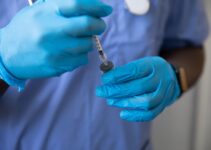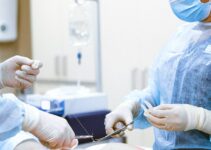Imagine finally finding a solution to your arthritis pain, a treatment that offers relief and restores your quality of life. Look no further – arthroscopy is here to help.
Discover the innovative approach to arthritis treatment that is changing lives. In this guide, we will walk you through the procedure, discuss its benefits, and help you determine if it’s the right choice for you.
Get ready to take control of your arthritis and experience a new lease on life.
Understanding Arthroscopy: An Overview of the Procedure
You’ll learn all about arthroscopy, a minimally invasive procedure that allows doctors to diagnose and treat joint problems, in this comprehensive overview. Arthroscopy has become an increasingly popular method for treating various joint conditions, including arthritis. This procedure offers several benefits that make it a preferred choice for patients who desire a quick and efficient recovery process.
One of the main advantages of arthroscopy is its minimally invasive nature. Unlike traditional open surgery, arthroscopy requires only small incisions, resulting in less pain, swelling, and scarring. This means that you’ll experience a shorter recovery time and can return to your daily activities sooner.
Additionally, arthroscopy allows for a more accurate diagnosis of joint problems. By using a tiny camera called an arthroscope, your doctor can visualize the inside of your joint and identify any abnormalities or damage. This enables them to provide a targeted and precise treatment plan.
Furthermore, arthroscopy offers a faster recovery process compared to traditional surgery. Since the procedure is less invasive, your body can heal more quickly, reducing the amount of time you’ll need to spend in the hospital and allowing you to get back to your normal routine faster.
The Benefits of Arthroscopy for Arthritis Treatment
If you’re looking for a less invasive option to treat your arthritis, arthroscopy can be a great choice. With this procedure, small incisions are made to access the affected joint, resulting in minimal damage to surrounding tissues.
Not only does this lead to faster recovery times, but it can also provide relief from arthritis symptoms and improve your overall joint function.
Minimally Invasive Joint Surgery
When considering treatment options for arthritis, it’s important to explore the benefits of minimally invasive joint surgery, such as arthroscopy. This innovative approach offers numerous advantages for patients who desire a faster recovery and less post-operative pain.
With advancements in joint surgery techniques, arthroscopy has become a popular choice among individuals seeking effective relief from arthritis symptoms. The minimally invasive nature of this procedure means smaller incisions, reduced scarring, and minimized damage to surrounding tissues.
Additionally, arthroscopy allows for a quicker return to daily activities and improved overall joint function. By opting for this less invasive surgery, you can experience the benefits of faster healing, less pain, and improved joint mobility.
Consult with your healthcare provider to determine if arthroscopy is the right treatment option for you.
Faster Recovery Time
Opting for arthroscopy can lead to a quicker recovery time, allowing you to resume your daily activities sooner.
When it comes to recovering from joint surgery, it’s essential to explore various recovery techniques and rehabilitation methods that can expedite your healing process. Here are some strategies to consider:
- Physical therapy: Engaging in targeted exercises can strengthen your muscles, improve flexibility, and promote joint stability.
- Pain management: Utilizing medications, such as nonsteroidal anti-inflammatory drugs (NSAIDs), can help alleviate discomfort during the recovery process.
- Proper nutrition: Consuming a balanced diet rich in vitamins and minerals can support your body’s healing process and enhance overall recovery.
- Rest and relaxation: Allowing your body sufficient time to rest and recover is crucial for optimal healing.
Is Arthroscopy Right for You? Determining Candidacy
Have you considered exploring if arthroscopy is a suitable option for you? When it comes to arthritis treatment, determining eligibility for arthroscopy is an important step. It is crucial to understand the benefits, risks, and alternative treatments available before making a decision.
To help you make an informed choice, let’s take a look at the eligibility criteria for arthroscopy:
| Eligibility Criteria | Alternative Treatments |
|---|---|
| Mild to moderate arthritis | Medications |
| Limited joint damage | Physical therapy |
| Inflammation in the joint | Lifestyle changes |
| Failed non-surgical treatments | Assistive devices |
| Good overall health | Weight management |
Arthroscopy is a minimally invasive procedure that allows surgeons to assess and treat joint conditions using a small camera and specialized instruments. While it can provide relief and improve joint function, it may not be suitable for everyone. Your doctor will evaluate your medical history, perform physical examinations, and consider alternative treatments before determining if arthroscopy is right for you.
Preparing for Arthroscopy: What You Need to Know
To ensure a successful arthroscopy, it’s essential that you carefully follow the preoperative instructions provided by your healthcare team. Here are some key things to keep in mind as you prepare for your procedure:
- Anesthesia options: Your healthcare team will discuss anesthesia options with you before the arthroscopy. They’ll explain the different types of anesthesia available and help you choose the one that’s best suited for your specific needs. This will ensure that you’re comfortable and pain-free during the procedure.
- Preoperative preparations: Your healthcare team will provide you with specific instructions on how to prepare for the arthroscopy. This may include fasting for a certain period of time before the procedure, avoiding certain medications, and showering with a special antibacterial soap.
- Post-operative care: After the arthroscopy, it’s important to follow the post-operative care instructions given by your healthcare team. This may include taking prescribed pain medications, keeping the surgical area clean and dry, and following any activity restrictions or physical therapy recommendations.
The Arthroscopy Procedure: A Step-by-Step Guide
During the arthroscopy procedure, your surgeon will insert a small camera into your joint and carefully examine the area for any signs of damage or abnormalities. This minimally invasive procedure allows for a closer look at the joint, helping your surgeon diagnose and treat conditions such as arthritis more effectively. Before undergoing arthroscopy, it is crucial to undergo a thorough pre-surgery evaluation. This evaluation helps determine if you are a suitable candidate for the procedure and assesses any potential risks or complications.
Physical therapy plays a vital role in your recovery after arthroscopy. It helps improve your joint’s range of motion, strength, and stability. By incorporating a personalized exercise program, physical therapists can target specific muscles and joints affected by the surgery. This aids in reducing pain, inflammation, and swelling, while simultaneously promoting healing and preventing further damage. A combination of exercises, manual therapy, and modalities, such as heat or ice, can be utilized to optimize your recovery and facilitate a quicker return to normal activities.
Here is a table summarizing the importance of pre-surgery evaluation and the role of physical therapy in arthroscopy recovery:
| Pre-Surgery Evaluation | Role of Physical Therapy in Arthroscopy Recovery |
|---|---|
| Assesses candidacy for surgery | Improves joint range of motion, strength, and stability |
| Identifies potential risks or complications | Reduces pain, inflammation, and swelling |
| Helps determine the best course of treatment | Promotes healing and prevents further damage |
| Ensures a thorough understanding of the procedure | Facilitates a quicker return to normal activities |
| Allows for patient-specific treatment plans | Optimizes recovery through exercises, manual therapy, and modalities |
Recovery and Rehabilitation After Arthroscopy
You can enhance your recovery and rehabilitation after arthroscopy by following a personalized exercise program and incorporating modalities such as heat or ice. Here are some key strategies to help you on your journey:
- Engage in post-operative exercises: Your doctor or physical therapist will provide you with a tailored exercise program to help strengthen your muscles, improve range of motion, and restore function. Consistency and gradual progression are key to achieving optimal results.
- Manage pain effectively: Pain management is an essential part of the recovery process. Your healthcare team may prescribe pain medications or recommend non-pharmacological methods such as heat or ice therapy to alleviate discomfort. It’s important to follow their guidance and communicate any concerns or changes in pain levels.
- Practice good self-care: Taking care of yourself physically and mentally is crucial during the recovery period. Ensure you get enough rest, eat a nutritious diet, and stay hydrated. Additionally, practicing relaxation techniques such as deep breathing or meditation can help reduce stress and promote healing.
- Seek support: Going through recovery can be challenging, both physically and emotionally. Reach out to family, friends, or support groups for encouragement and understanding. They can provide a listening ear, offer assistance, and motivate you to stay committed to your recovery goals.
Potential Risks and Complications of Arthroscopy
Before undergoing arthroscopy, it’s important to be aware of the potential risks and complications associated with the procedure. These can include unforeseen surgical complications, such as damage to nerves or blood vessels, as well as the risk of infection.
Additionally, there may be post-operative risks, such as blood clots or adverse reactions to anesthesia. It’s crucial to discuss these risks with your healthcare provider and weigh them against the potential benefits of the procedure.
Unforeseen Surgical Complications
Be prepared for unforeseen surgical complications that may arise during arthroscopy. While this procedure is generally safe and effective, it’s important to be aware of potential complications and take necessary precautions. Here are some key points to consider:
- Infection: Proper post-surgical care, including keeping the incision site clean and following any prescribed antibiotics, is crucial to prevent infections.
- Nerve damage: Although rare, nerve injuries can occur during arthroscopy. Surgeons take great care to avoid this, but it’s important to discuss the risks with your healthcare provider.
- Blood clots: After surgery, it’s important to stay active and follow the recommended exercises to prevent blood clots from forming.
- Long-term outcomes: Arthroscopy can provide significant pain relief and improvement in joint function. However, it’s essential to manage expectations and understand that individual outcomes may vary.
Infection and Post-Operative Risks
During arthroscopy, it’s important to closely monitor and promptly treat any signs of infection to minimize post-operative risks. Infection prevention is crucial to ensure a smooth recovery and optimal outcome for the patient. Post-operative care plays a significant role in reducing the chances of infection. Here are some key measures to consider:
| Infection Prevention | Post-Operative Care |
|---|---|
| Proper sterilization of instruments and equipment | Administering prophylactic antibiotics as prescribed |
| Maintaining a sterile surgical environment | Regularly changing dressings and keeping the incision site clean |
| Educating patients on proper wound care | Encouraging proper nutrition and hydration to promote healing |
Success Stories: Real-Life Experiences With Arthroscopy
Have you heard about the amazing results achieved by patients undergoing arthroscopy? This innovative procedure has been helping countless individuals find relief from arthritis pain and regain their mobility.
Let’s take a look at some real-life experiences and the long-term benefits they’ve experienced through arthroscopy:
- Reduced pain: Many patients have reported a significant reduction in pain after undergoing arthroscopy. This procedure allows the surgeon to remove damaged cartilage or bone fragments, providing immediate relief.
- Improved mobility: Arthroscopy helps restore joint function by repairing or removing damaged tissues. As a result, patients have experienced improved range of motion and increased mobility in their joints.
- Faster recovery: Compared to traditional open surgery, arthroscopy offers a quicker recovery time. Patients have been able to return to their daily activities and enjoy a better quality of life in a shorter period.
- Positive patient testimonials: Countless patients have shared their success stories, praising arthroscopy for its effectiveness in treating arthritis. These testimonials highlight the positive impact this procedure has had on their lives.
Arthroscopy has proven to be a game-changer for arthritis patients, providing long-term benefits and improving their overall quality of life. If you’re suffering from arthritis, it may be worth considering arthroscopy as a potential treatment option. Consult with your healthcare provider to determine if this procedure is right for you.
Frequently Asked Questions
How Long Does the Arthroscopy Procedure Typically Take?
The arthroscopy procedure typically takes about 30-60 minutes. After the procedure, you can expect a relatively quick recovery compared to traditional surgery, allowing you to get back to your daily activities sooner.
Are There Any Alternative Treatments for Arthritis That I Should Consider Before Opting for Arthroscopy?
Before opting for arthroscopy, you may want to consider alternative treatments for arthritis. Natural remedies like exercise, physical therapy, and dietary changes can help manage symptoms and improve joint function.
What Is the Success Rate of Arthroscopy in Treating Arthritis?
Arthroscopy has a high success rate in treating arthritis. It can provide relief and improve joint function. The procedure is minimally invasive and has a shorter recovery time compared to traditional surgery.
Can Arthroscopy Completely Cure Arthritis or Is It More of a Temporary Solution?
Arthroscopy can provide temporary relief from arthritis symptoms, but it may not completely cure the condition. It’s important to consider the long-term effectiveness and potential risks before deciding on this treatment option.
Are There Any Specific Exercises or Physical Therapy That I Should Do After Arthroscopy to Aid in the Recovery Process?
After arthroscopy, you should engage in specific exercises and physical therapy to aid in your recovery process. These activities will help strengthen your joints and muscles, allowing you to regain mobility and alleviate arthritis symptoms.






